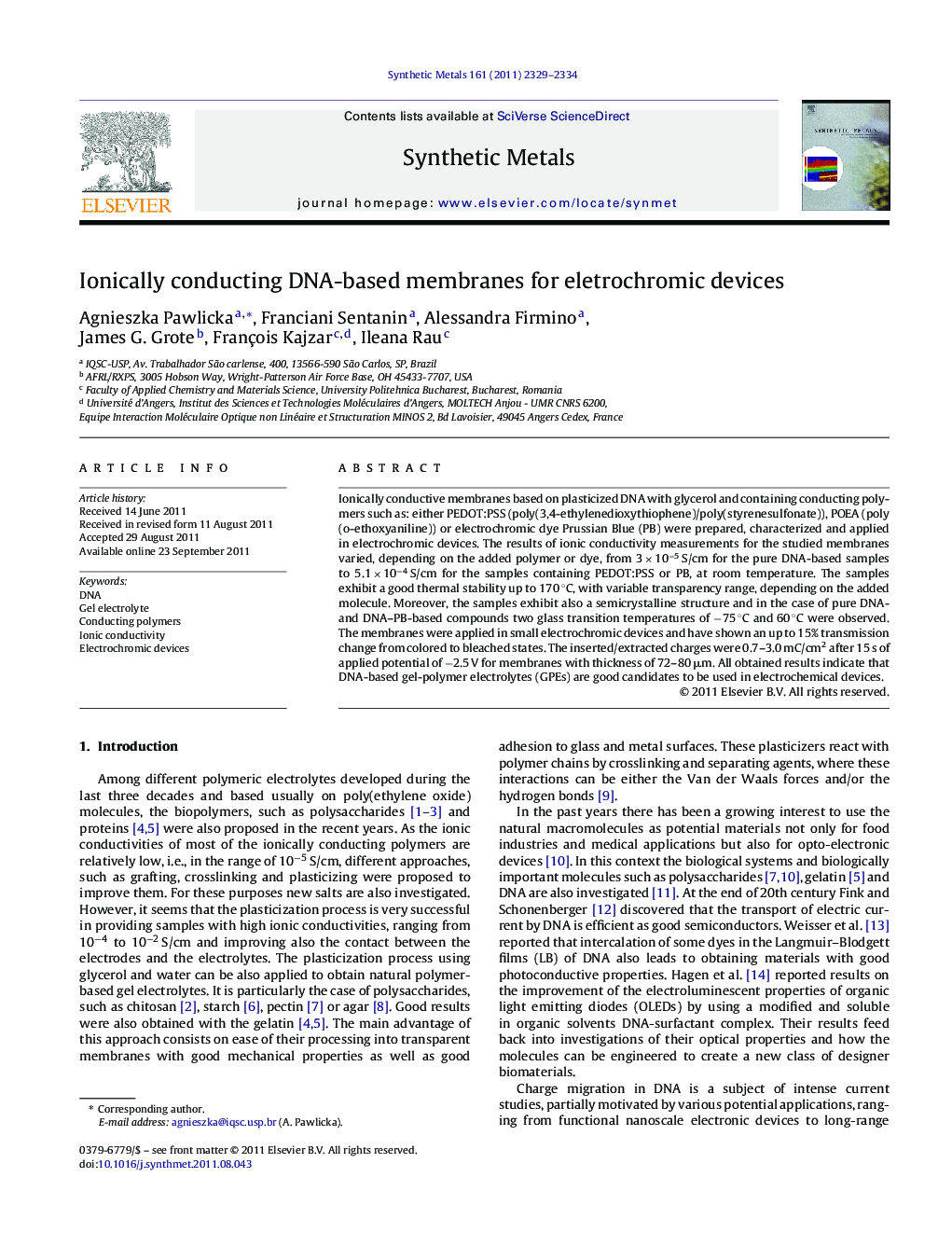| Article ID | Journal | Published Year | Pages | File Type |
|---|---|---|---|---|
| 1441759 | Synthetic Metals | 2011 | 6 Pages |
Ionically conductive membranes based on plasticized DNA with glycerol and containing conducting polymers such as: either PEDOT:PSS (poly(3,4-ethylenedioxythiophene)/poly(styrenesulfonate)), POEA (poly (o-ethoxyaniline)) or electrochromic dye Prussian Blue (PB) were prepared, characterized and applied in electrochromic devices. The results of ionic conductivity measurements for the studied membranes varied, depending on the added polymer or dye, from 3 × 10−5 S/cm for the pure DNA-based samples to 5.1 × 10−4 S/cm for the samples containing PEDOT:PSS or PB, at room temperature. The samples exhibit a good thermal stability up to 170 °C, with variable transparency range, depending on the added molecule. Moreover, the samples exhibit also a semicrystalline structure and in the case of pure DNA- and DNA–PB-based compounds two glass transition temperatures of −75 °C and 60 °C were observed. The membranes were applied in small electrochromic devices and have shown an up to 15% transmission change from colored to bleached states. The inserted/extracted charges were 0.7–3.0 mC/cm2 after 15 s of applied potential of −2.5 V for membranes with thickness of 72–80 μm. All obtained results indicate that DNA-based gel-polymer electrolytes (GPEs) are good candidates to be used in electrochemical devices.
► Novel DNA-based free standing membranes with ionic conductivity properties. ► Blends of biopolymers with conducting polymers. ► Application in electrochromic devices. ► Environmentaly friendly materials.
